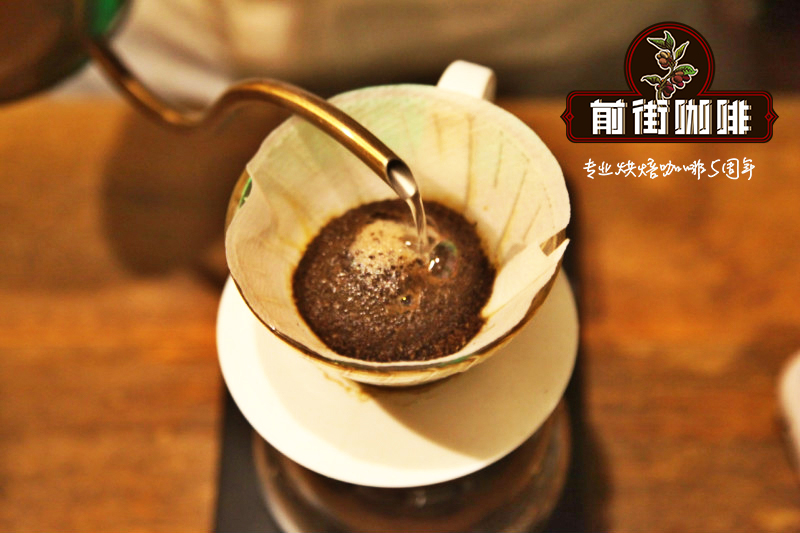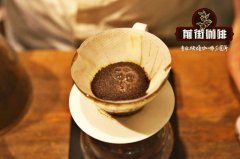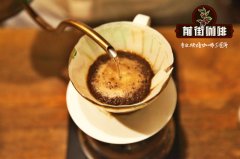"Iron pickup Coffee Bean Taste report" what is the special taste of small grain coffee iron pickup coffee beans?

Professional coffee knowledge exchange more coffee bean information please follow the coffee workshop (Wechat official account cafe_style)
Small fruit coffee-- Arabica species-- coffee types--
Arabica subspecies: coffee trees belong biologically to the shrub order Rubiaceae. Yes
Arabica species (Arabica, scientific name is coffea arabica)
Robusta species (Robusta,coffea canephora) and
Laibirika (Liberica) and Issa (Excelsa)
The latter two have no economic value.
Arabica species-and the following subspecies:
Typica Iron pickup beans, the first coffee variety to be discovered centuries ago in the Kaffa Kafa district of Isopia, is also the origin of the coffee name. Brought to America by French naval officers in the 18th century, it was derived from the Jamaican Blue Mountains, san roman,pache,villalobos,java,jember and other species. The yield of Tieka coffee beans is not high, the leaves are long and thin, the leaves are red and copper, and the beans are large and oval like goose eggs. The quality of drinking is usually great, known for its excellent sweetness, cleanliness and purity.
Bourbon bourbon-A variety whose yield is 20 to 30% higher than that of Tabicaio but is still considered to be low. Coffee beans are small in size, with broad leaves and wavy edges and are very oily green. Coffee fruits are red, yellow and orange according to their subspecies. Raw coffee beans are famous for their complex acidity and excellent balance.
Caturra Kaddura, a bourbon mutant found in Brazil, is a mutant with high yield and good quality. the tree is short, dense and not as tall as the bourbon species, and the lateral branches are leafy and wavy. It's not so common in Brazil now, but in Colombia. Costa Rica. Nicaragua is very popular. The quality of drinking usually consists of bright acid and medium to low mellowness. Transparency and sweetness are not as good as bourbon
Catuai kaduai-is a hybrid of Mundo novo and Caturra. Originally from Brazil, it has high yield and high resistance. Short plants are suitable for planting in areas with strong winds and heavy rainfall. It is now widely distributed in Central America. The fruits are red and yellow, but there is no difference in flavor.
Catimorkatimo-is a hybrid of timor and Caturra with resistance to iron rust. Early maturity, disease resistance, increased yield but usually lower quality than other varieties. It is mainly influenced by the mixing of timor species to Robusta. Although it contains 25% of the Robusta gene, it usually has the herbal and dried fruit aromas unique to Indonesia if the process is good.
Maragogype Malakgibi-- also known as elephant beans are often sold in Taiwan under the name of Super Blue Mountain-- has been found to be a mutant of Typica in Brazil. The tree type is very tall and the leaves are very large, and the raw beans are also the largest. The output is low, but there is a certain market because of the good sales. It has propagated northward in recent centuries and can also be found in Central America. The drinking characteristics do not necessarily range from fragrant and thick to floral and fruity acid.
Mundi Novo Mondonover, a natural hybrid of Typica and Bourbon, first appeared in Brazil. High yield, strong disease resistance, but slow maturation.
Variants of Pache comum-- Typica first appeared in El Brito and Santa Rosa in Guatemala. It drinks smoothly.
A hybrid of Pache colis-- Caturra and Pache comum, found in Mataquescuintla, Guatemala. Have the ability to resist phoma.
Villalobos-- Villalobos is a variety of Typica cultivated in Costa Rica. Similar to typica, the lateral branches and trunk are at an angle of 60 degrees and have copper leaves. Villalobos grows well at high altitudes and is very wind-resistant even in poor ridge soil. The growth quality is the best in shaded environment. Famous for its delicate acidity and excellent sweetness
SL28--, a native Kenyan coffee variety, was cultivated by Scot Laboratories for SL in 1930. Botanists at the SL Institute are looking for varieties such as Typica,Moca to mate in the hope of finding varieties with high quality, high yield and high resistance. SL28 is one of the products, but the yield is not high. SL28 has copper leaves and large beans, which are generally believed to be influenced by Isopian and Sudanese species. It has a strong citric acid and sweet taste, and the flavor is complex and balanced.
Pacamara-- pacamara is a new variety artificially cultivated in El Salvador, which is derived from the mixture of pacasm and maragogybe. It inherits the good size of maragogybe elephant beans, and the large size of beans improves the mediocre flavor of maragogybe. It is famous for its unique flavor, rich layers and complex taste, as well as unique spices, heavy fragrance and thick tail. At first, even in the cup of excelllent raw bean competition, it was not accepted because the taste was too unique and different from the previous beans. It was successively met with Waterloo. In recent years, it was called the national treasure bean in El Salvador, and neighboring countries in Central America also competed to grow it.
Geisha-- geisha is a native breed from the geisha mountains of Ethiopia, and the Ethiopian dialect geisha is synonymous with Japanese geisha, giving him a romantic nickname-geisha. This beautiful breed comes from Ethiopia but is famous in Panama! Because it not only sounds good but also tastes good, the esmerida Emerald Farm in Panama has always been famous for its good flavor. Later, it was found that the good flavor came from a special variety in the park, that is, geisha species. It won the championship in the best of panama Coffee Bean Competition year after year, almost to an unbeatable level. At the same time, it also continued to set new highs for the auction of raw coffee beans. What are the characteristics of such beans? Strong aroma of jasmine with peaches. Plums. Fine fruit aromas such as citrus and long toffee caramel sweet taste like an elegant cup of jasmine tea
Small fruit coffee (scientific name: Coffea arabica), also known as Arabica (Arabica), is the most traditional Arabica coffee variety. Originally from East Africa, coffee was monopolized by the Arab world for a long time before the 15th century, so it was called "Arabian coffee" by Europeans.
It turns out that all the commercial coffee in the world is small fruit coffee, but it was only at the end of the 19th century that growers began to look for other disease-resistant varieties. At present, small fruit coffee is still the main variety of coffee, accounting for about 3% and 4% of the world's total coffee output. It is mainly grown in Latin American countries, but also partly in Indonesia and the Pacific islands. At present, the geographical and climatic conditions of Brazil, the largest coffee producer in the world, are very suitable for the growth of small fruit coffee, and the main varieties of coffee planted are also small fruit coffee. Brazil's coffee production accounts for more than 1% of the world's total output.
Important Notice :
前街咖啡 FrontStreet Coffee has moved to new addredd:
FrontStreet Coffee Address: 315,Donghua East Road,GuangZhou
Tel:020 38364473
- Prev

Variety Classification of Typica Tiebika Coffee beans is Yunnan Ironhide Card a classic 1952 tin card?
Professional coffee knowledge exchange more coffee bean information please follow the coffee workshop (Wechat official account cafe_style) La vaiedad Typica iron card coffee beans A la variedad typica podra definirse como la madre de todas las variedades, ya que a partir de ella se han desarrollado, por mutacin nat
- Next

What's so special about the characteristics and taste of Panamanian coffee beans, the most expensive coffee beans in the world?
Professional Coffee knowledge Exchange more information on coffee beans follow Coffee Workshop (Wechat official account cafe_style) Panama has been one of the best coffee producers in the world since three years ago, which has surprised countries that have been at the vanguard of developer production for many years. The main producing area of Panamanian coffee beans is the washing place where the best coffee beans are produced in the west near the border of Costa Rica.
Related
- Detailed explanation of Jadeite planting Land in Panamanian Jadeite Manor introduction to the grading system of Jadeite competitive bidding, Red bid, Green bid and Rose Summer
- Story of Coffee planting in Brenka region of Costa Rica Stonehenge Manor anaerobic heavy honey treatment of flavor mouth
- What's on the barrel of Blue Mountain Coffee beans?
- Can American coffee also pull flowers? How to use hot American style to pull out a good-looking pattern?
- Can you make a cold extract with coffee beans? What is the right proportion for cold-extracted coffee formula?
- Indonesian PWN Gold Mandrine Coffee Origin Features Flavor How to Chong? Mandolin coffee is American.
- A brief introduction to the flavor characteristics of Brazilian yellow bourbon coffee beans
- What is the effect of different water quality on the flavor of cold-extracted coffee? What kind of water is best for brewing coffee?
- Why do you think of Rose Summer whenever you mention Panamanian coffee?
- Introduction to the characteristics of authentic blue mountain coffee bean producing areas? What is the CIB Coffee Authority in Jamaica?

